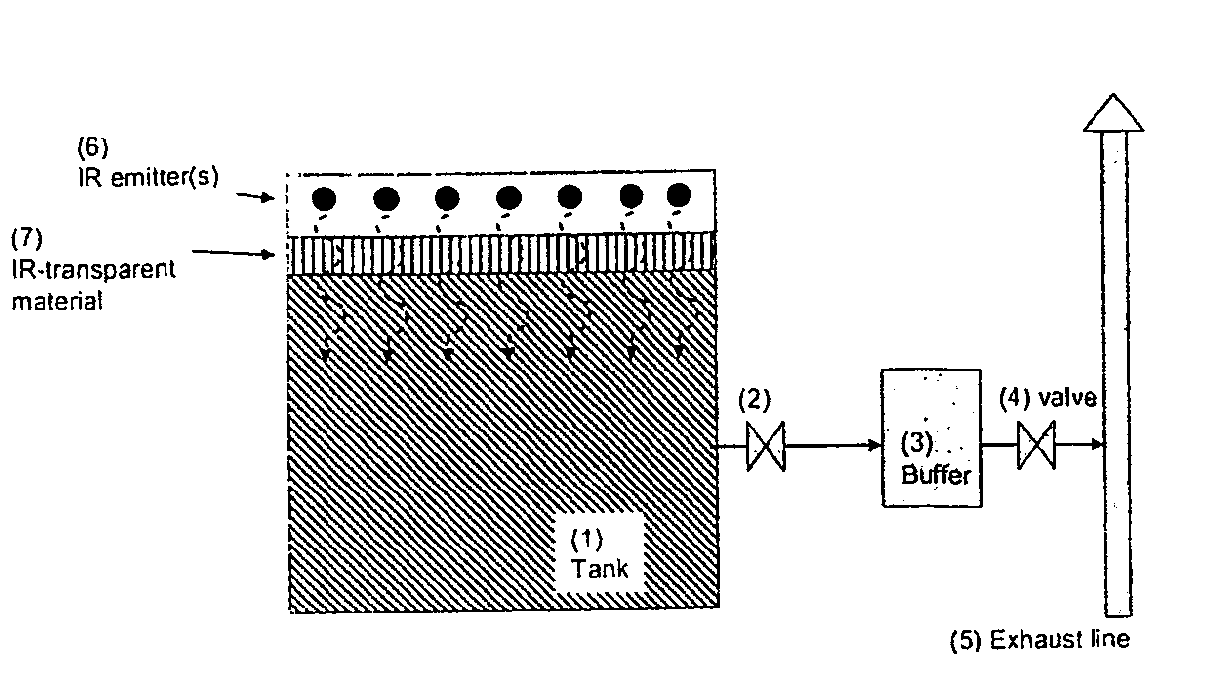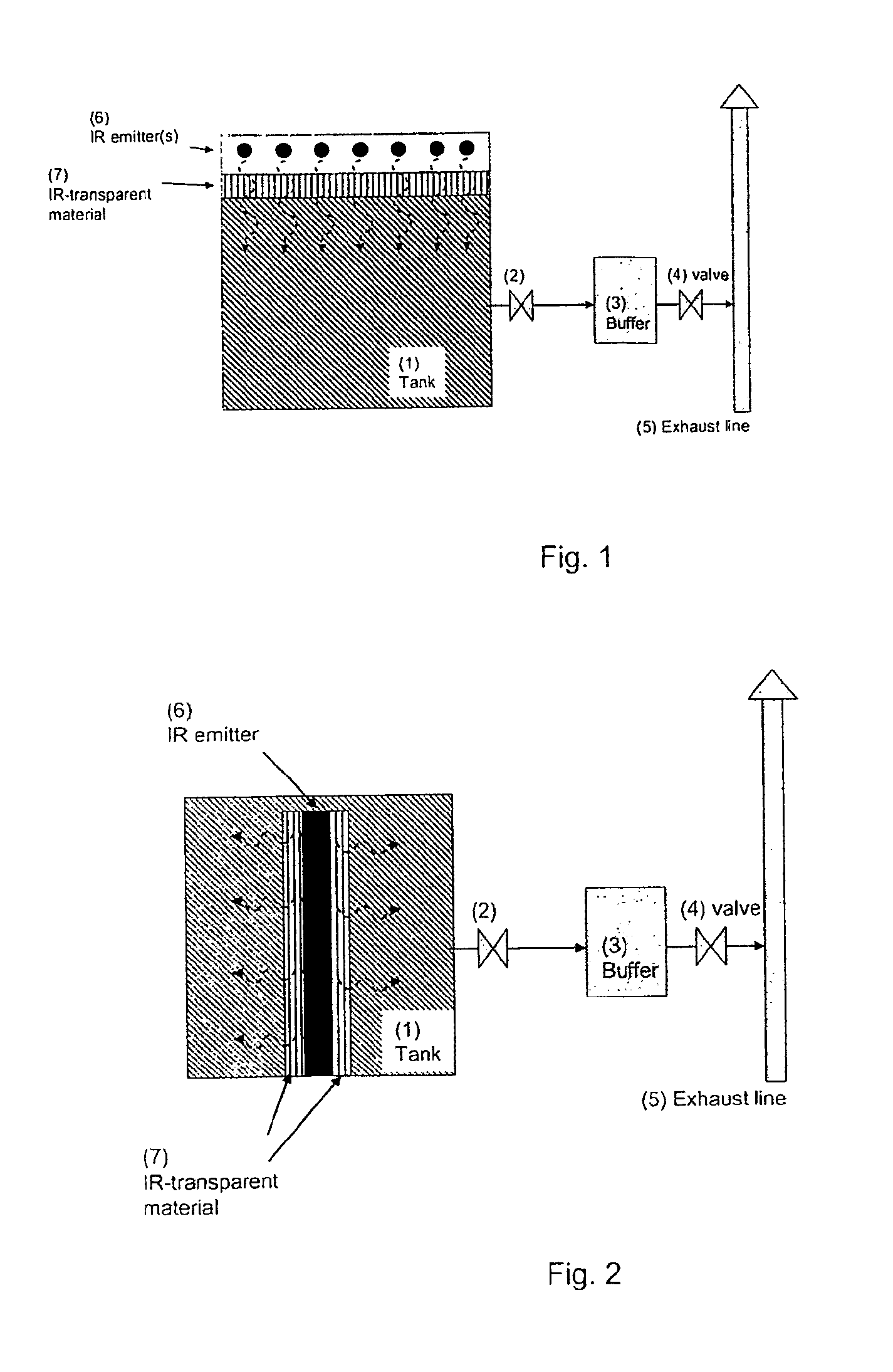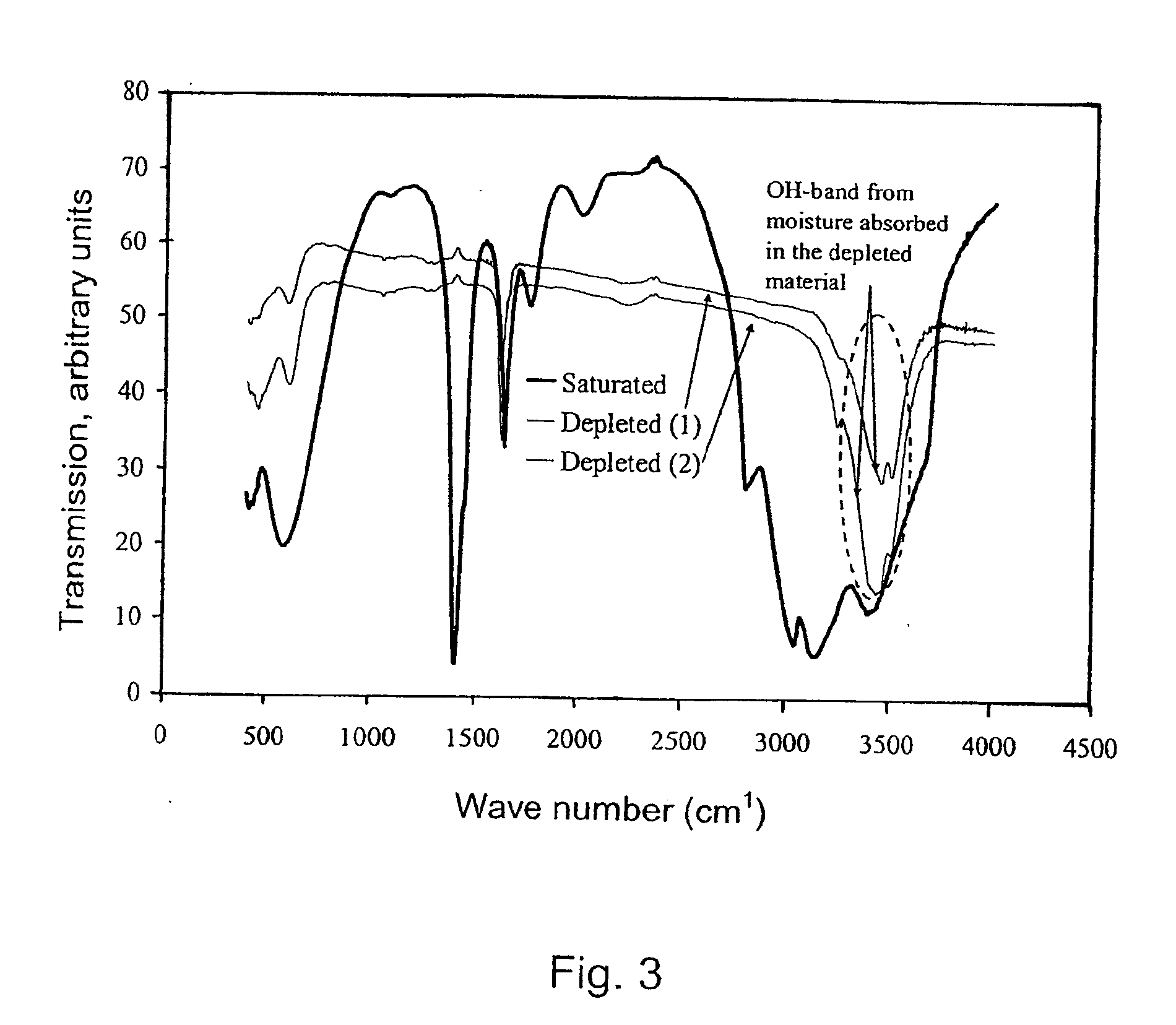Method of Storing and Delivering Ammonia and the Use of Electromagnetic Radiation for Desorption of Ammonia from a Chemical Complex
a chemical complex and ammonia desorption technology, applied in the field of ammonia storage and delivery and the use of electromagnetic radiation for desorption of ammonia from a chemical complex, can solve the problems of low ammonia conversion efficiency, slip of ammonia, and inability to achieve the reduction of nosub>x /sub>using conventional car exhaust catalysts (three-way catalysts), so as to achieve low ammonia slip and high nox conversion
- Summary
- Abstract
- Description
- Claims
- Application Information
AI Technical Summary
Benefits of technology
Problems solved by technology
Method used
Image
Examples
Embodiment Construction
[0035]In the present invention the activation of the ammonia molecules stored in the ammine complex is—as opposed to normal thermal desorption—carried out in the form of electromagnetic radiation. Chemical substances absorb electromagnetic radiation at specific wavelengths corresponding to transitions between different energy levels or bands in the molecule or chemical complex. In an absorption event, the energy is delivered from a photon in the electromagnetic radiation to a specific degree of freedom in the chemical substance resulting in a localized excitation far away from thermal equilibrium. Thus by choosing a proper frequency of the radiation, specific degrees of freedom can be excited selectively—for example the complex-bond between ammonia and the metal ion in the absorbing salt. In this way direct and non-thermal desorption can be realized. According to the invention it has been found that for several materials the wavelengths where the bonded ammonia results in absorption...
PUM
| Property | Measurement | Unit |
|---|---|---|
| wavelength | aaaaa | aaaaa |
| wavelength | aaaaa | aaaaa |
| pressure | aaaaa | aaaaa |
Abstract
Description
Claims
Application Information
 Login to View More
Login to View More - R&D
- Intellectual Property
- Life Sciences
- Materials
- Tech Scout
- Unparalleled Data Quality
- Higher Quality Content
- 60% Fewer Hallucinations
Browse by: Latest US Patents, China's latest patents, Technical Efficacy Thesaurus, Application Domain, Technology Topic, Popular Technical Reports.
© 2025 PatSnap. All rights reserved.Legal|Privacy policy|Modern Slavery Act Transparency Statement|Sitemap|About US| Contact US: help@patsnap.com



